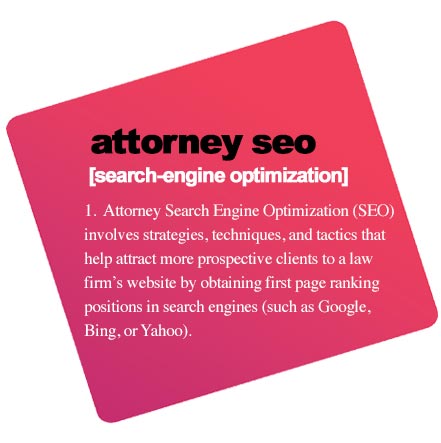When house hunting, 90 percent of buyers use the internet. In fact, 53 percent of buyers start their search online, according to “The Digital House Hunt,” an extensive report on real estate consumer trends conducted by Google and the National Association of Realtors.
More than ever, people head online when it comes to looking for homes and finding Realtors®. According to the 2016 Profile of Home Buyers and Sellers, 86 percent of home buyers consider real estate websites the most useful source of information when buying a home. The very first step that 44 percent of home buyers make when house hunting is to look online.
44% of home buyers start their house hunt by looking online. #realestate #SEO
Between 2008 and 2012, real estate-related searches increased by 253 percent. With so much opportunity online, realtors can’t afford to miss out on this valuable traffic; for professionals in real estate, SEO is more important than ever.
When it comes to capturing traffic for terms related to real estate, SEO efforts begin with local keyword targets on a personal website.
1. Target Local Keyword Phrases
Sixty-nine percent of home shoppers begin their research with a local keyword phrase, like “Glendale realtor.”
Most realtors service multiple cities and regions. However, when you start your website, focus on the main city you do business in first. From there, build out silos that target other areas.
Optimize your website for search terms such as:
- [City] real estate
- [City] homes for sale
- [City] real estate listings
- [City] realtor
- [City] real estate agent
These words can appear on pages throughout your site. For example, a site focusing on just Glendale realty might be organized like this:
- Glendale Homes for Sale
- Living in Glendale
- Glendale Real Estate Testimonials
- About Your Glendale Realtor
Throughout these pages, incorporate the local keyword targets, working them into content that is useful to a prospective home buyer.
Clay explained that you should make your website a resource. On a page like “Living in Glendale,” provide information on school districts, crime rates, median income, public transportation, and statistics on the average homeowner.
The more targeted a real estate website can be, the better.
Really focus on capturing local traffic. You have a much better chance to rank for, let’s say, “Glendale realtor” than “Southern California realtor” — as you build your site and traffic, you can eventually target more competitive terms like “Southern California realtor,” but not right out of the gate. You’ll have more success if you take a more targeted approach.
A Note on Using IDX/MLS
It’s common practice for realtors and brokers to use IDX (Internet Data Exchange) to render real estate listings. While this is great for users, it usually does little to influence rankings on search engines because these MLS listings are usually rendered with jQuery, in an iFrame or on a subdomain that appears off of the main site — meaning Google won’t index the content as part of the site. That’s why it’s important to add additional unique content to the listings page, such as:
- extra facts and features of a property
- excerpts from your testimonials page
- videos
- photos
2. Write Blog Post on Homes You’re Especially Keen to Sell
A real estate agent can represent hundreds of listings at a time, there are no doubt a few key properties that the realtor is particularly motivated to sell. One way to secure traffic to your site for those specific properties is to write blog posts. Each blog post should target a specific property’s address, which perspective home buyers will be searching for using Google. The address becomes the keyword — follow all SEO best practices such as using the keyword in:
- Meta description
- Title tag
- Alt tag on photos
- File name on photos
- The content
As for the content itself, come up with 200 words of unique content describing the home’s features in addition to the standard description — and in this case, you don’t have to worry about duplicate content.
Google expects to see those descriptions of homes appear across the web. You won’t be penalized for including standard listing information. However, if you want to rank for the address as a keyword, you’ll have to include unique content, as well.
3. Take Advantage of Photos and Videos
Photos and videos are key engagement objects on all websites, but this is especially true of a real estate site. Home buyers love seeing a video tour of the inside of their prospective new homes. In addition to video tours, consider capturing testimonials on video, too.
Whenever you sell a home, get a testimonial. If you have a video camera, a steady hand and good lighting, try to get that testimonial recorded on the spot. A home buyer is ecstatic right after getting their keys. That’s a great time to ask for a review.
An Australian real estate group reported seeing 403 percent more inquiries for listings with video than those without video, and studies have shown adding a video to a page triples the amount of inbound link.
4. Make Your Site Mobile
The statistics are in and they show that home buyers are searching for real estate on mobile devices. “The Digital House Hunt” report referenced earlier also found:
- 89 percent of new home shoppers search using a mobile device during the home buying process.
- A 300 percent growth of real estate broker-related searches on tablets year over year.
- Foreclosure searches have risen 180 percent year over year on mobile devices.
The report found that home buyers are apt to use mobile real estate sites while at home, at work, while waiting in line, at restaurants and in other people’s homes. Home buyers visit real estate websites to:
- Read general home information
- Get directions to visit a home
- Compare prices
- Compare features
- Search a listing company’s inventory
- Call a broker
- Locate a listing agent
- Read reviews
- Research mortgage financing
- Email/contact a broker
- Watch an online video about a property
With these statistics in mind, it’s clear that making your website mobile is an important factor in real estate SEO. We recommend using responsive design, which is Google’s preferred mobile configuration (read more on responsive design).
Real Estate SEO: Beyond Your Website
In addition to optimizing your personal website for traffic, there are steps you can take off-site to entice prospective clients, as well, such as optimizing your bio page on your real estate agency’s website, getting listed in directories and using social media strategically.
5. Get Listed in Directories
Real estate agent directories get a lot of traffic, so it’s worth your while to get listed in them. Each of the following highly trafficked real estate sites have directories available to realtors:
Zillow alone had 498 million page views in a single month and Trulia had 277 million. There’s a lot of potential traffic to be captured by getting listed in the right real estate directory.
6. Optimize Your Bio on Your Broker’s Website
If you’re a realtor working with an agency, your brokerage house more than likely hosts a web page for each realtor. While it is unlikely that this sub-domain can rank for a local keyword target, this is a great page to optimize for your name. People will Google your name, so it’s something you should optimize for.
Clay recommended including your full name in the title tag and meta description. This might be challenging, however, because on the broker site, you’re operating on a domain that you don’t have full control over. Find out what you can and cannot change — if you can alter the meta data, optimize those fields for your name.
In addition to ranking for your name, you can also use the bio page to provide contact information and link to your personal website. For additional tips on ranking for your name, check out “Rank for Your Name,” which has more insights on why and how to use your name as a keyword.
7. Incorporate Social Media
When it comes to client relations, social media is a great way to start relationships or strengthen existing ones. A realtor with an active social media presence is able to interact with clients where they are every day: Facebook, Twitter, Google+, Pinterest and/or Instagram. Do your research and find out where your target clients are most active socially.
Real estate is all about relationships — any record you can build on social media that shows your expertise is important. When people vet you and discover a healthy, professional social media presence, it’s going to signal trust.
Because photos and videos are key components in real estate sales, Pinterest and Instagram are particularly useful platforms for realtors. On Facebook, consider joining location-based groups and on Google+, get active in local communities. Across all platforms, use social media strategically, employing hashtags like #realestate or #listing. For more tips on leveraging each of these networks, read “Social Media for Business.”
Need some inspiration? Take a look at how professionals are wielding #realestate:











 Marketing your company effectively in the major search engines is a critical part of business growth and sustainability. The problem is that the “real-estate” to market your company is small, meaning the first page of Google, Yahoo or Bing. If you aren’t effectively marketing your business on this piece of “real-estate”, you are missing out on a huge customer base.
Marketing your company effectively in the major search engines is a critical part of business growth and sustainability. The problem is that the “real-estate” to market your company is small, meaning the first page of Google, Yahoo or Bing. If you aren’t effectively marketing your business on this piece of “real-estate”, you are missing out on a huge customer base. Google ranks sites on what we can control, such as your website content, social media activity, etc., and also what we can’t control, such as online user activity. In Google’s newest algorithm they put a lot of ranking influence on user activity, meaning they are trying to do a better job of providing the results customers want.
Google ranks sites on what we can control, such as your website content, social media activity, etc., and also what we can’t control, such as online user activity. In Google’s newest algorithm they put a lot of ranking influence on user activity, meaning they are trying to do a better job of providing the results customers want. Whenever a customer is typing in a search term looking for your product or service, you can be in front of every customer. You can put your brand name as a suggestion from Google and Bing. Every customer who types in the search box will have your name in front of them as a suggestion before they see any of your competition. You can get them to see your company and those that click on your name in the auto-suggestion drop-down will go to a page that has only your company listed on the entire page. You completely bypass your competition.
Whenever a customer is typing in a search term looking for your product or service, you can be in front of every customer. You can put your brand name as a suggestion from Google and Bing. Every customer who types in the search box will have your name in front of them as a suggestion before they see any of your competition. You can get them to see your company and those that click on your name in the auto-suggestion drop-down will go to a page that has only your company listed on the entire page. You completely bypass your competition.